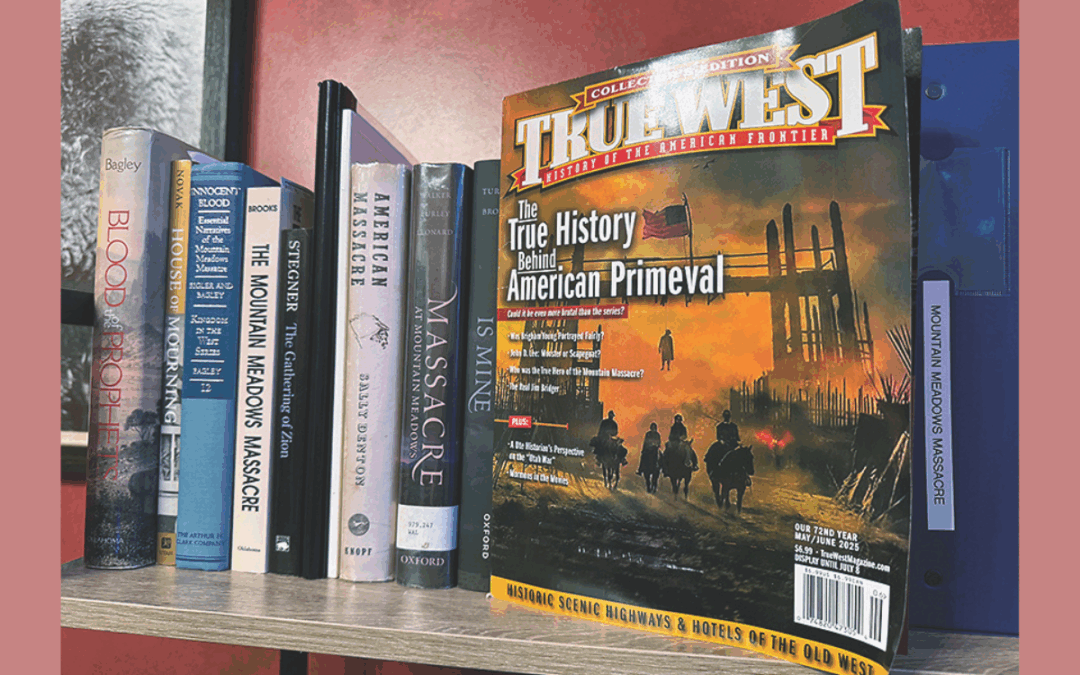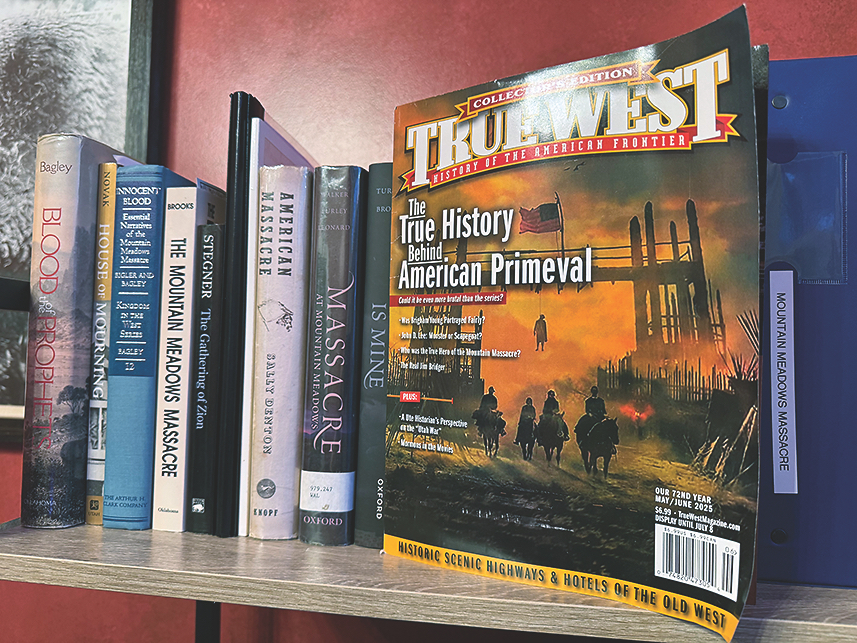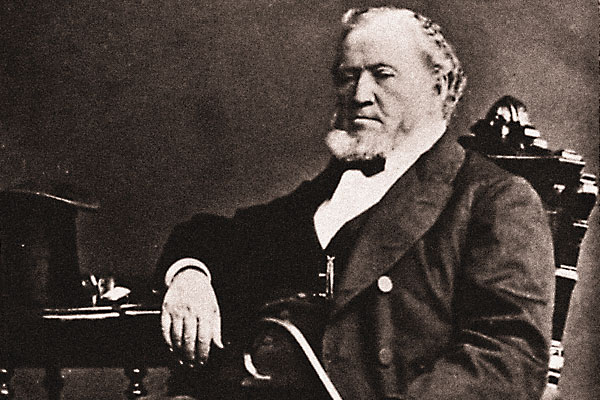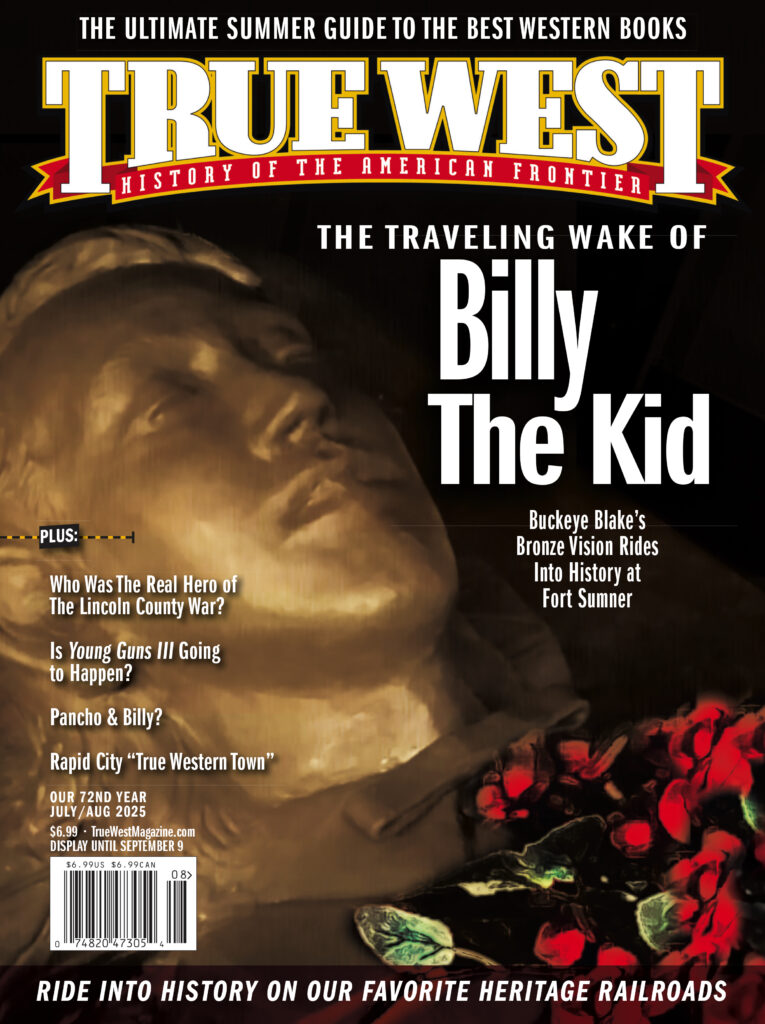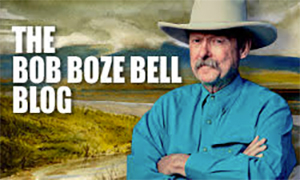Our readers remind us of the variables and vagaries of historic truths, “well-established” facts, headlines and historical photographs.
Henry Parke’s review of American Primeval is totally out of character with True West‘s historical focus on event accuracy. Everything about the Netflix garbage is enough to make me want to cancel my cable subscription. The only thing the script left out was Billy the Kid being one of the children spared in the massacre. Parke’s love for Hollywood gore puts him on par with Quentin Tarantino but without QT’s sense of humor. Parke’s drooling should have been in the National Enquirer, not TW. The rest of the related stories are excellent. Especially Hutton’s and the Bagley, Walker debate.
—Allen Fossenkemper
Fountain Hills, Arizona
I must commend your big cajones for even tackling the Mountain Meadows subject. I thought your entire staff did a great job.
—Mort Mortensen
Atlanta, Georgia
In your May-June 2025 issue there is an error near the beginning of your Classic True West, titled “Did Brigham Young Order A Massacre?” It states that “John Lee was tried twice and was hanged in 1877.” Lee was clearly shot by a firing squad from concealed, circled wagons. How did that one get by you?
—Charlie Thompson
La Plata, Missouri
Ed Note: Yes, that was not a good day in our Proofing Department, and you are correct.
First, in Paul Andrew Hutton’s “The Ghosts of Mountain Meadows,” the author emphasizes that Jacob Hamblin was instructed to rally the Southern Paiutes “against the American Enemy.” That request has been clearly documented as seeking support against the Union Army and it is not related to the Mountain Meadows Massacre. It should not be interpreted as Hamblin trying to convince Southern Paiutes to participate in the horrific event.
Secondly, in Forrest Cuch’s article, “The Battle Axe and a Raw Deal,” there was a misquote from a Southern Paiute leader, Tut-se-gav-its.
Tut-se-gav-its (?-1871) was a lead member of the Santa Clara band who lived outside of present-day St. George, Utah. That was about 32 miles away from the Mountain Meadows Massacre site. Tut-se-gav-its, called a “chief” in some literature, had established a positive relationship with Jacob Hamblin, who acted as Indian Agent at Fort Harmony starting in 1854. This Indian mission was established in 1852 by John D. Lee (of the Massacre). It was also an important way station and trading point for Mormon travelers.
In one of the first encounters Hamblin had with the Santa Clara band, a fellow Mormon aimed a weapon at a tribal member. Hamblin immediately put himself between the shooter and the Indian and threatened that the bullet would have to go through him first.
Tut-se-gav-its joined the LDS church and acted as an intermediary between other Southern Paiutes and Whites while the church taught his people how to farm, dress and speak their way. Over the next three years, promising cotton crops, introduced to the band by the colonizers, and the damming and redirecting of the river pretty much ruined the band’s previously sustainable system of horticulture. At this point, Tut-se-gav-its’ people, the Yanawant, resented that they had become dependent on the White man’s resources and been stripped of their culture.
In 1856, an unidentified member of the band communicated to Hamblin their feelings on the disenfranchisement: “We cannot be good, we must be Piutes (sic). We want you to be kind to us. It may be that some of our children will be good, but we want to follow our old customs.” This quote is found in John D. Lee’s report from the Saint George Stake, held in the LDS Church manuscript collection. It cannot be artificially ascribed to the band leader. Also, it is in response to the continued pressure on the band to abandon their traditions. Like the misapplication in Hutton’s article, it too, is unrelated to the Mountain Meadows Massacre.
As for Cuch naming Tut-se-gav-its as a participant in the Massacre… that claim has long been tossed out because the Yanawant band leader was with Jacob Hamblin, in Salt Lake City, for the duration of the events. He was being ordained as an elder in the church. Hamblin recorded in his journal that they passed the Arkansas Company on their way up there. Besides Hamblin, three other first-person accounts (D. B. Huntington, G. A. Smith, and W. Woodruff) support the date range of Tut-se-gav-its’ ordination and, simultaneously, the impossibility of him being implicated in the Massacre.
—Janelle Molony
Phoenix, Arizona
The latest issue is so important to Mountain Meadows studies, it earned a place among my books on the subject.
—Erik J. Wright, assistant editor,
Tombstone Epitaph

